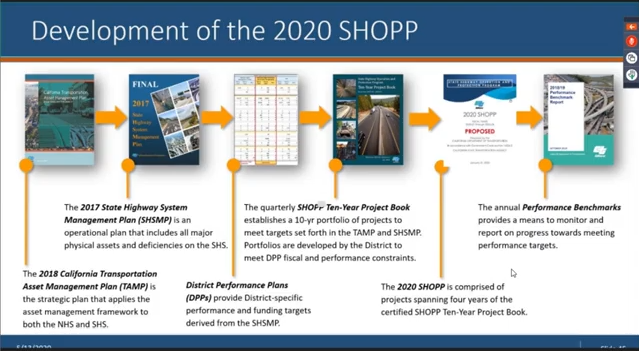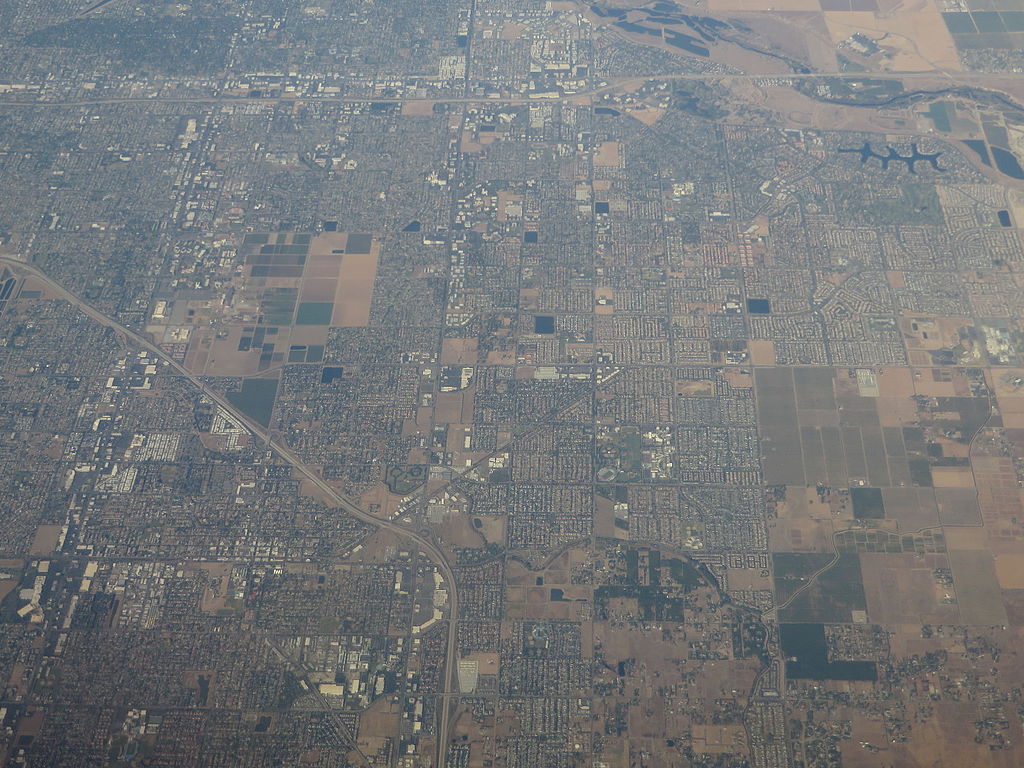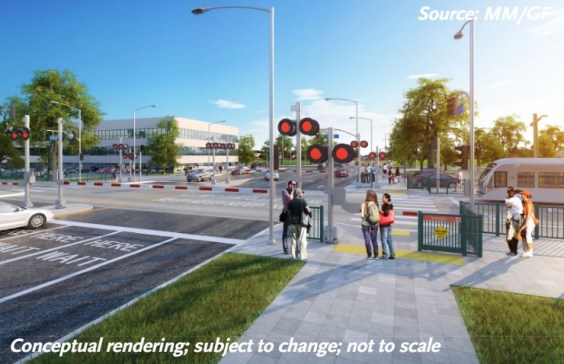The California Transportation Commission today adopted the 2020 State Highway Operations and Protection Program. The $20 billion program will include a $100 million set-aside for Complete Streets elements on existing SHOPP projects.
This is a major change in how SHOPP projects are usually funded. In addition to the unusual "reservation" for complete streets, this is the first SHOPP that is "entirely driven by performance measures," according to Caltrans staff. The projects in it must be consistent with state plans that outline priorities for funding, including the Asset Management Plan, the Highway System Management Plan, district performance plans, and annual performance benchmarks for meeting state goals on a variety of measures.
The 2020 SHOPP, the largest program in the state's history, will invest $20 billion in 920 projects, 322 of which are new. As the program name implies, its projects focus on maintaining and repairing existing roads, bridges, and other highway facilities throughout the state.
So reserving $100 million for complete streets elements is a minor, if key, portion of the program. In the future, "we hope to see complete streets improvements built into projects from the outset," said Michael Johnson, State Asset Manager for Caltrans. The idea is that a set-aside would not be needed in the future, because bicycle and walking access would automatically be included in every SHOPP project wherever "possible, appropriate, and feasible," as Caltrans policy puts it.
In his presentation on the item, Johnson told the Commission that the proposal was in direct response to feedback from districts, commission staff, and community members.
It was also in keeping with comments made early in the meeting by California State Transportation Agency undersecretary Elissa Konove and Caltrans director Toks Omishakin. Both spoke of the importance of prioritizing active transportation elements in the investments California makes, both now, while people are mostly stuck at home, and in the future, as the state begins to reopen.
"More than ever, our leadership on active transportation is needed," said Omishakin. Especially under the threat of the pandemic and even recovering from it, "people are moving away from transit; they are walking and biking more; they could possibly drive more," he said. "I believe transit will recover, especially as we address health and safety challenges, but a key part of the transportation system - and transit - being successful is active transportation."
"Many people in this state don't drive, either because they can't afford to, or choose not to," he said. Investment in active transportation "is also key for meeting state environmental, economic, and health goals."
Yes, this is the head of Caltrans passionately arguing for investments in active transportation. Bask in it.
The money to fund the proposed "reservation" would not add an extra $100 million on top of the total SHOPP, but would instead be made available by delaying or adjusting several existing projects that are either not ready to move ahead or could be adjusted to reduce costs.
Although Caltrans identified seven such projects, for the total $100 million, only three of them made it onto today's agenda in time to be voted on by the CTC. That created unusual excitement - for a CTC meeting - when commissioners were confronted with the question of whether they could approve a set-aside for the whole amount, or, under "fiscal restraint rules," could only approve it partially.
CTC Director Mitch Weiss insisted that the commission was constrained to approve only as much as they had already made available. Commissioner Hilary Norton tried to find a middle ground, proposing the vote on the SHOPP be delayed until the other projects' changes could be approved by the commission. Commissioner Yvonne Burke was worried that if they didn't "get their arms around this $100 million now" it could be taken away, given the serious budget problems the state is facing and the as-yet unknown steps Governor Newsom plans to take in his May budget revision, due out tomorrow.
Commissioner Joseph Lyou said he found it "very encouraging that we have unanimous support among the commissioners for investing in complete streets." He said it could be enough that there was "clear direction" that the commission would support Caltrans in identifying and approving the remaining projects. Regardless, he said, "I will continue to fight like crazy to make sure we get that $100 million for complete streets."
Director Omishakin asked the commissioners to consider a different route: to approve the entire $100 million today, making it contingent on Caltrans returning to the June meeting with adjustment requests for the remaining projects.
He offered his request as "a resolution of sorts for right now," so as to avoid putting off a decision. "This is something we need to show our community stakeholders today that we're ready to take action on," he said. "I'm not arguing law or policy--I'm imploring us to show leadership."
"The people who die on our system are our most vulnerable," he said. "These are the people who would benefit from this funding." In addition, state climate goals mean "we need to see an increased push on addressing greenhouse gas issues."
"We know it has a positive economic impact when we make these investments in active transportation," he said. "We need to meet transportation and mobility needs across the board, and we know what impacts these investments have on mobility and transportation for us as a state."
"I understand the technicality," he said. "I don't agree with using that to hold back doing this."
In the end they voted to break it up-- $42 million now, committing to setting aside the other $58 million at their June meeting.
Meanwhile Caltrans staff "easily" came up with a list of more than twenty existing SHOPP projects that could potentially use funding to make meaningful bike and walk improvements. But that list is only meant as a suggestion, said Johnson. Some of the feedback staff received while developing the SHOPP was that Caltrans has not done a good job engaging with local communities, and "we don't want to repeat that lack of engagement."
"The advantage of this reservation is it will allow time for engaging communities and getting feedback," he said, so the right projects can address real needs.
A group of advocacy organizations, including California Walks, ClimatePlan, the California Bicycle Coalition, Safe Routes Partnerships, Coalition for Clean Air, and others, had sent a letter to the commission offering help on this issue [PDF]. Supportive of the work Caltrans has done to create this reserve funding, they also warn that the community engagement part of the picture is crucial.
Projects that use the reserve need to "demonstrate community support" and be "identified through meaningful community engagement," they write. For the reserve funds to have meaningful impact, "it is of the utmost importance that there be support and a demonstrated process where community voices are heard in prioritizing projects ... for these improvements."
Several speakers mentioned the Active Transportation Program's existing public outreach process as a model worth following.





